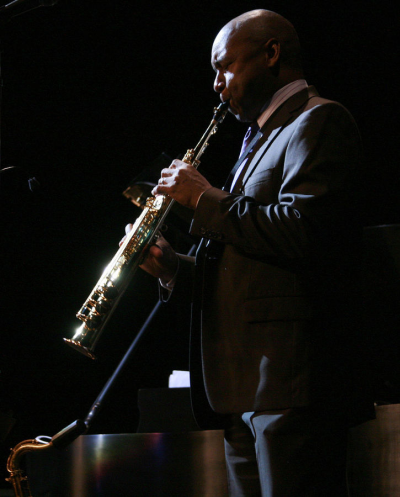.
.
Charles Ingham’s photo-narratives connect time, place, and subject in a way that ultimately allows the viewer a unique way of experiencing music history.
.
.
___
.
.
Indianola Is a Place Apart
(Church and Second Streets, Indianola, Mississippi)
2020
.

.
Charles describes the work
.
….If one is reading from left to right, the first image in this piece depicts the corner of Church and Second where in his teens, Riley B. King would play the blues, his hat on the sidewalk beside him. Every Saturday, a tractor-pulled wagon would take plantation workers from Inverness into Indianola, “a place apart,” King writes in his autobiography Blues All Around Me. “It had a few paved streets and a few stores where you could buy nice clothes.” But Indianola had more: On Church Street, the Jones Night Spot allowed Riley King to hear Sonny Boy Williamson II; Count Basie, with Lester Young on tenor sax; and the Jay McShann band, with Charlie Parker on alto. “Allowed” is a big word: The underage King would listen and watch through slats in the side of the building. The truck left for the ride back to the plantation at 5:00 in the afternoon, but King would play his corner until 9:00 before heading over to the Jones Night Club, and then walking the eight miles home.
…..The verbal text in this piece is the opening to Blues All around Me, King referring to his childhood stutter: “Words aren’t my friends. Music is. Sounds, notes, rhythms. I talk through music.”
…..I took the photographs in the piece in Indianola, Jackson, and Louin, Mississippi, and in Memphis, Tennessee. One can just make out the reflection of a mural of B. B. King in the window of an Indianola store front.
…..I didn’t want to make the piece too breezy (because of B. B. King’s personality, it would be easy to do that). But my piece isn’t about the King of the Blues that we know; it’s about a young man playing on a street corner for change. And playing in Indianola, the town where the White Citizens’ Councils was born. In July 1954, two months after Brown v. Board of Education, the Indianola plantation manager Robert B. Patterson met with like-minded racists in his home to form the first Council, its aim to fight, by any means, the implementation of desegregation in Mississippi. The Councils worked with the Ku Klux Klan but, unlike the Klan, met openly. The historian Charles M. Payne suggests that the White Citizens’ Councils pursued “the agenda of the Klan with the demeanor of the Rotary Club.”
…..Thus, along with the pink tablecloths, there is a good deal of darkness in this piece.
…..As of the last census, 27.4% of the population of Indianola live below the poverty line.
…..King was quietly insulted if anyone suggested that the blues was a lesser form than jazz. In the autobiography, he recalls being approached by a fan after a show: “Man, you were great! I knew you played blues, but never dreamed you could actually play jazz.” B. B. King, being B. B. King, thanks the young man, but the next day reflects on the faint praise: “Does he think anyone can pick up a guitar and play some blues? Is it like washing the dishes or mowing the grass?” Not for a moment. As King notes elsewhere, “The blues are a mystery, and mysteries are never as simple as they look.” The young fan had missed the point. Listening to Count Basie through the wall of the Church Street nightclub, Riley King heard music “as bluesy as anything I’d heard on the Delta.” The guitarist’s ears “were wide open,” hearing a single-stringed style in both T-Bone Walker and Charlie Christian that reminded him of a horn. And it wasn’t only to other guitarists such as Charlie Christian and Barney Kessel that King was listening, but also to Ben Webster, Lester Young, and “far-out beboppers like Dizzy Gillespie and Charlie Parker, whose ‘Back Home Blues’ sounded as good and gritty to me as anything by Muddy Waters.” In Houston, King drives Charlie Parker to a gig as a favor to Diz, and Bird tells the guitarist, “I’m a blues player, B. . . . We’re all blues players. It’s just that we hear blues in different ways. The day we get away from the blues is the day we’ll stop making sense.”
.
___
.
.
photo by Jacqueline Ramirez

.
Born and educated in England, Charles Ingham moved to California in 1982. He has always been interested in hybrid forms and the intersection of literature and the visual arts, his photography often seeking to transgress the traditional boundaries separating the verbal and the visual.
Ingham lives in San Diego and shows his work at Distinction Gallery in Escondido. He recently had three pieces accepted for the 28th Annual Juried Exhibition at the Athenaeum Music and Arts Library, La Jolla. He also had two pieces shown in the “Six-Word Story” exhibitions at Front Porch Gallery, Carlsbad, and the Oceanside Museum of Art.
His work can be found.at his website: charlesingham.com
.
Click here to view Charles Ingham’s “Jazz Narratives,” a unique interpretation of jazz history
.
.
.
.
.
.</span







































